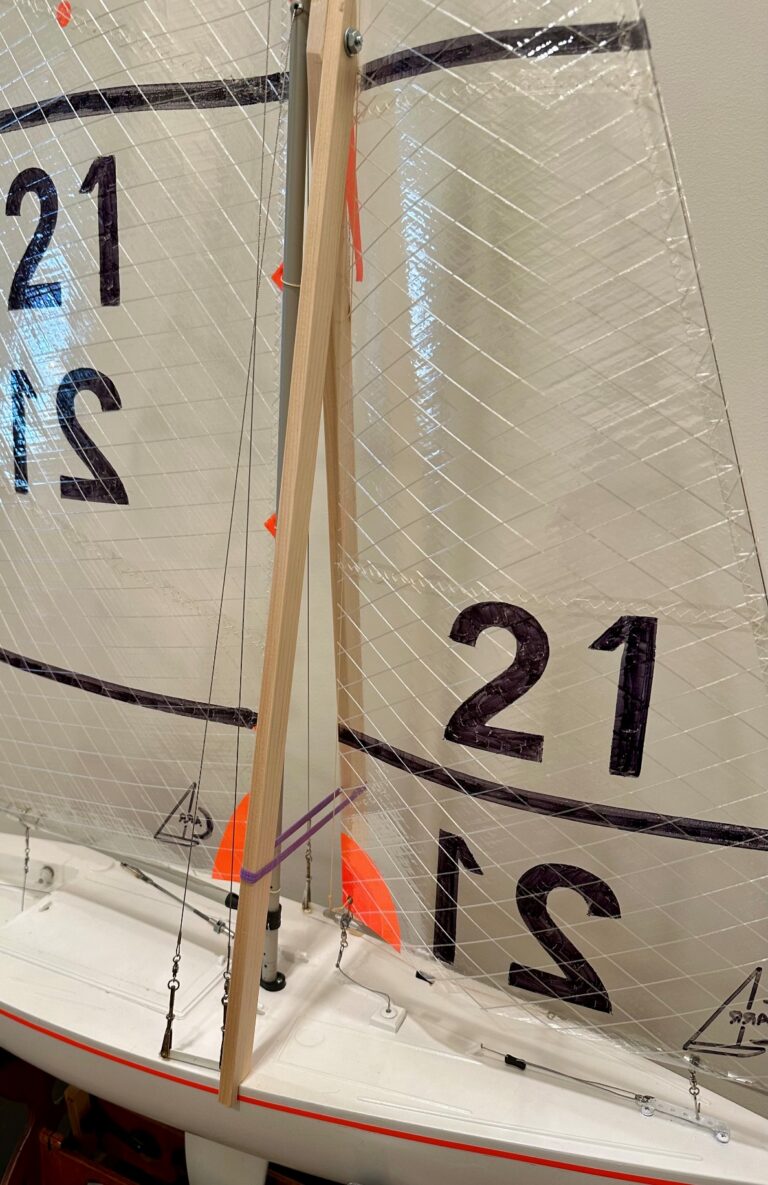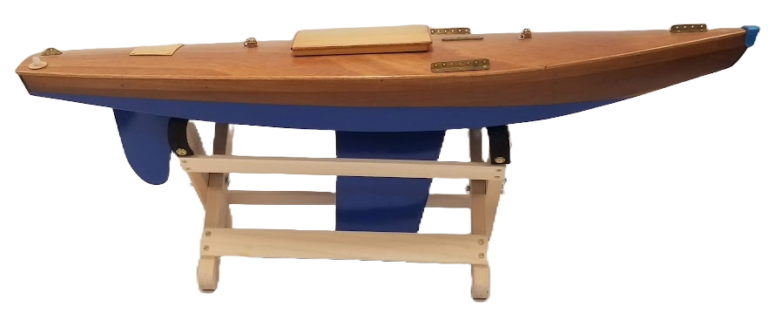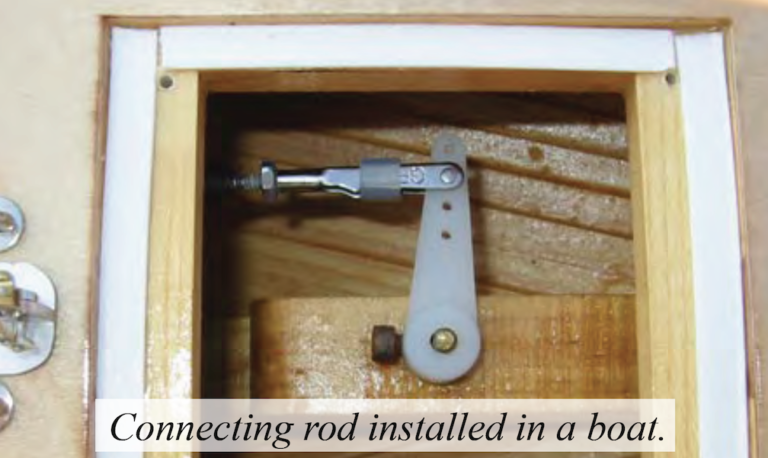by Paul Fiske, Boston MYC
Most of us set the vane hit or miss; some adjust it according to the actual wind direction, and wonder why the boat refuses to steer the course desired. A few skippers have discovered the principle that a boat does not sail on the true wind, that is, the wind shown by the wind-sock or flag.
On the contrary, the boat actually sails on the apparent wind, which is the wind direction over a moving boat.
For instance, if a steamer is making ten knots north with the wind blowing ten knots west, the smoke from the funnel goes off toward the south-east. The apparent wind in this case is north-west.
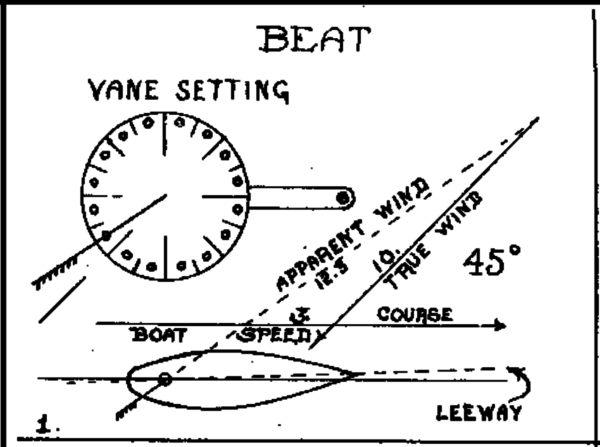
As an illustration, in the accompanying diagram (Fig. 1), a boat is beating to windward, forty-five degrees off the true wind, at a speed of three miles in a ten-mile wind.
The apparent wind on which the boat sails consequently has a velocity of about twelve miles and an angle of about thirty-five degrees over the moving boat.
The vane should be set to this apparent wind. All sailing vessels make considerable leeway when beating; this usually amounts to two or three degrees and can probably be disregarded when setting the vane, as degree markings would be too small to be of practical value. The markings on the vane-disc indicate compass points, each point equaling 11.25 degrees.
By examining the diagram it can be seen that if a boat has the ability to travel faster than three miles in a ten-mile wind, the angle of difference will be greater, and vice-versa. They are simply approximate and are used for comparison.
For correct vane setting, first determine the direction of the true wind, and set the feather to this in the usual manner. The necessary correction for the apparent wind, speed of boat, and leeway, is accomplished by one adjustment, viz., moving the feather aft about ten or twenty degrees, or one to two compass-points, as marked on the vane-disc.
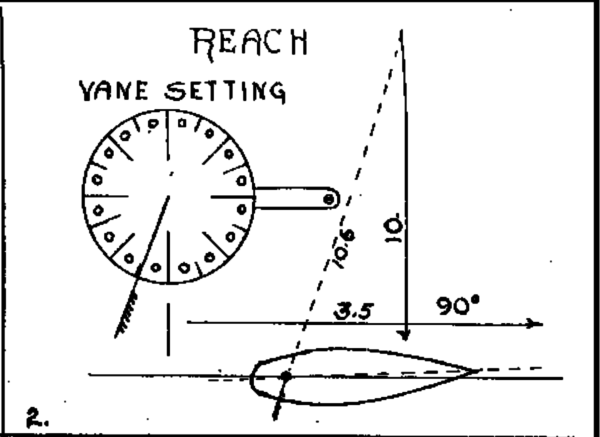
It is suggested that the skipper and his mate shuttle the boat across the pond with the wind abeam, and try to make the boat return to the same spot each time. In this way the skipper can determine the greatest angle of difference. The compensating angle would have the same compass-point value, but on the opposite side when returning.
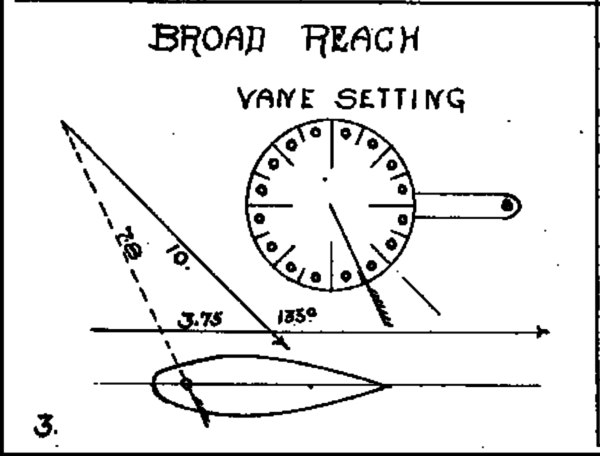
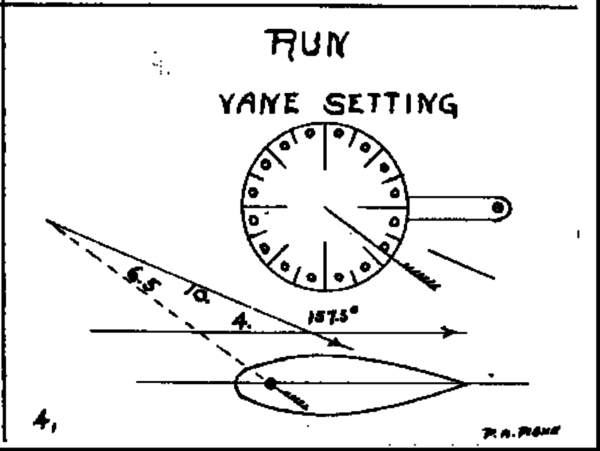
A boat whose sail-plan is in what is termed the correct position generally requires a lee helm up to a certain speed, then there are intermediate speeds during which a boat is well-balanced, while for higher speeds she requires a weather helm.
In order to get the most speed from our models in varying wind conditions, with the least rudder angle and its accompanying drag, movement of the sail-plan is allowed in some degree by the rating rules. Moving the sail-plan assists the vane and makes the steering easier.
However in some classes this shift is so limited that it will take some experimenting to get the proper rudder pressure in extreme cases, such as very light or very strong winds.
Some skippers keep a record and refer to it when necessary to get correct vane settings for such extremes.
In an A-Class yacht with a large sail-plan, the back draft from the main-sail may affect the vane if the sail is sheeted too close. This may also occur with boats of smaller classes when the vane is too close to the main-sail.
From the analysis it is observed that when on a beat, the vane-feather is moved aft about ten degrees, or one vane-point or compass point, from the true wind. When reaching or broad-reaching, the feather will be aft of the true wind about two points, or 20 degrees. With the wind almost directly astern the difference is about one point.
When the wind is directly behind the counter, sails set wing-and-wing, the pressure on the jib will usually balance the pressure on the main-sail, of the vane would be set with the feather forward, on the center-line of the yacht.
Are we still guessing? Perhaps; but at least we have something to judge by. A vane could be set accurately by mathematics, but this is out of the question for practical sailing.
Setting the vane is very much like trimming the sails, and some skippers have an uncanny ability to get things right most of the time. They are the fellows who stand out in every club as the most successful skippers.

